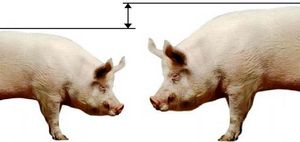Main Sector of relevance\IRC classification 11. Sciences (Chemistry, Physics etc)
11.45 Technology of sapropelic feed additives production

Developers’ contact information
State Scientific Institution “Institute of Nature Management of
the National Academy of Sciences of Belarus”
10, F.Skarina Str., 220114 Minsk
Summary
Sapropelic feed additives (SFA) containing mineral and biologically active substances on the basis of local raw materials.
Description
Production of sapropelic feed additives (SFA) containing mineral and biologically active substances on the basis of local raw materials. Introduction of SFA increases productivity of farm animals and decreases production cost of livestock products.
Technology type
Technical advantages and economic benefits
SFA guarantee activation of physiological processes in the organism of an animal leading to a more complete taking of nutrients of the basic diet. The economic effect of using 1 ton of SFA is 80 thousand rubles due to economical consumption of grain.
Technology differentiation and uniqueness
1 kg of local organic raw materials used for SFA production makes it possible to get additional 0.8 kg of meat and extra profit of 63.8 rubles for 1 kg of live weight gain.
Context in which technology was identified
12th International Specialized Exhibition “Chemistry, Oil and Gas”, 27-30.05.2008, Minsk
Technological keywords
Organic raw material, sapropel, food, animal breeding.
Development Stage
Intellectual property rights
Range of applications
Agricultural enterprises engaged in production and processing of sapropel, animal production units and feed-milling establishments.
Classifier Used at the EU Innovation Relay Centres
Preferable Regions
Practical experience
SFA production of at least 12 thousand tons per year with capital investments payback period of 10 years provides annual profit of more than 140 million rubles.
Environmental impact
Sapropelic raw materials from natural sources with subtle degree of modification and absence of synthetic components are used.
Type of collaboration sought
Terms and restrictions
— None
Available technical assistance